Introduction
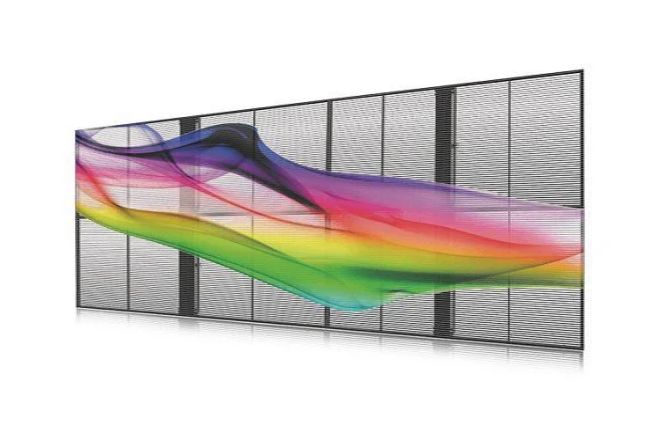
As a new display technology, the transparent LED display screen has gradually attracted wide attention and application with its unique transparent characteristics and excellent display effect.
The performance and quality of the transparent LED display module, as the basic unit that constitutes the entire display, directly determine the effect and reliability of the entire display. Therefore, the optimization of the transparent LED display module is particularly important.
1. What is the difference between the transparent LED display module and the traditional LED display module?
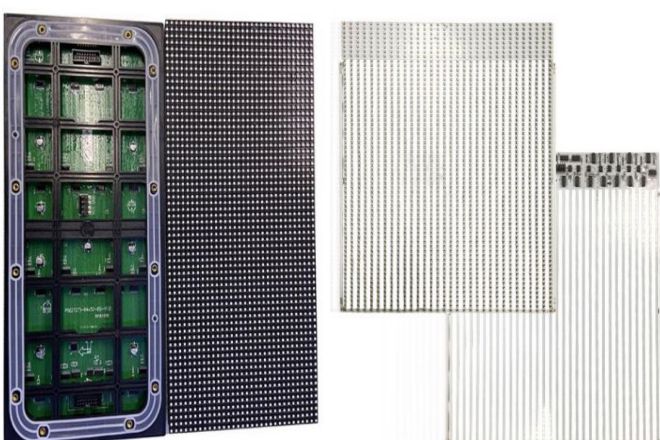
There are some obvious differences between the transparent LED display module and the traditional LED display module, which are mainly reflected in the following aspects:
Structural design:
The traditional LED display module is usually opaque, with a relatively thick structure and a bulky appearance. They usually need to be supported by a special skeleton, and the screen position needs to be reserved when designing the building.
The transparent LED display module adopts a light strip design, which achieves a lighter and more beautiful appearance by optimizing the structural shape. They are lighter and can be easily hung, fixed, or spliced. They are suitable for various installation environments, especially building facades and glass curtain walls.
- Effet d'affichage :
The traditional LED display module is mainly used to display images, text, and video with high resolution and color reproduction.
The transparent LED display module not only has the display function of the traditional LED display but also has a transparent effect. They can perfectly integrate the background environment with the display content to achieve a better visual experience. The contrast ratio of the transparent LED display is high, the image effect is more realistic, the visual impact is strong, and the advertising display effect is good.
- Scope of application:
The traditional LED display module is mainly made of steel and iron due to its opaque characteristics and bulky structure. It is mainly suitable for fixed installation locations indoors and outdoors.
Due to its high transparency and lightness, the transparent LED display module is more suitable for building facades, glass curtain walls, windows, exhibitions, and other occasions that need to be perfectly integrated with the environment. They can not only provide visual beauty but also realize advertising, information dissemination, and other functions.
2. Overview of transparent LED display module optimization
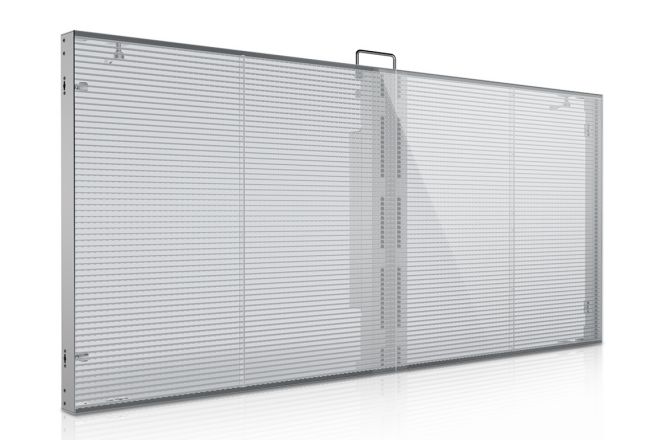
As an important part of modern display technology, the transparent LED display module involves multiple levels of detail improvement and technological innovation. The following is a more detailed overview of the optimization of the transparent LED display module:
1). Structural design optimization
Lightweight design: By adopting advanced manufacturing processes and new materials, such as flexible circuit boards, ultra-thin LED lamp beads, etc., the thickness and weight of the module are reduced, making it easier to install and integrate into various environments.
Modular design: Split the display into multiple independent modules, each of which can be replaced or upgraded separately to improve the maintenance and scalability of the module.
Heat dissipation design: It adopts an efficient heat dissipation structure, such as a heat sink, fan, etc., to ensure that the module can quickly dissipate heat during high-intensity work and prevent heat damage.
2). Display effect optimization
Transparency improvement: By optimizing the layout and arrangement of LED lamp beads, the spacing between the lamp beads is reduced, the transparency of the display screen is improved, and the background image or environment can be presented more clearly.
Color management: Adopt advanced color management technologies, such as color calibration, color enhancement, etc., to ensure that the module can accurately restore the color of the original image and provide a realistic display effect.
Perspective optimization: By adjusting the luminous angle of the LED lamp beads and the angle of the module, the audience can obtain a clear and distortion-free visual effect at different angles.
3). Energy efficiency optimization
Energy-saving technology: low-power LED lamp beads and drive circuits are used to reduce the energy consumption of the module while maintaining a high-quality display effect.
Intelligent dimming: Automatically adjust the brightness of the module according to the change of ambient light, which not only ensures the display effect but also reduces unnecessary energy consumption.
Energy recovery: In the module off or low brightness mode, the unused electric energy is converted into other forms of energy through energy recovery technology to further improve energy efficiency.
4). Stability and reliability optimization
Improved weather resistance: It adopts strong weather resistance, UV resistance, waterproof and dustproof materials, and designs to ensure the stable operation of the module in various harsh environments.
Fault detection and repair: integrate the intelligent fault detection system to monitor the working status of the module in real-time. Once the fault is found, it can automatically repair or prompt the user for maintenance.
Long-life design: Improve the service life of the module, reduce maintenance costs, and reduce the total cost of ownership of users by optimizing material selection, manufacturing process, and circuit design.
3. Key technologies for optimizing transparent LED display modules
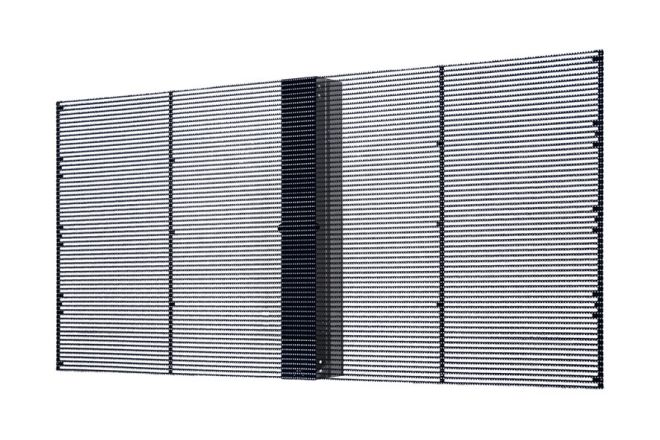
The key technologies for the optimization of transparent LED display modules mainly include the following aspects:
- High-definition display technology:
High-definition display is one of the core technologies of transparent LED display modules. By improving the resolution and color reproduction of LED lamp beads and optimizing the display algorithm, a clearer and more realistic display effect can be achieved. This requires the module to have high pixel density and a wide color gamut to present delicate images and rich colors.
- Transparency improvement technology:
One of the key features of the transparent LED display module is transparency. By optimizing the layout and arrangement of LED lamp beads, reducing the spacing between lamp beads, and adopting high-transparency packaging materials and substrates, the transparency of the display screen can be improved so that the background image or environment can be presented more clearly.
- Heat dissipation technology:
The transparent LED display module will produce a lot of heat when working. If it is not emitted in time, it will cause damage to the module or reduce performance. Therefore, heat dissipation technology is one of the important aspects of module optimization.
By adopting efficient heat dissipation structures, fans, heat sinks, and other heat dissipation devices and optimizing heat management algorithms, the heat dissipation efficiency of the module can be improved, and its stable work can be ensured.
- Energy-saving technology:
Energy-saving is another important direction for the optimization of transparent LED display modules.
By adopting low-power LED lamp beads and drive circuits and optimizing power management and dimming algorithms, the energy consumption of the module, operating costs, and impact on the environment can be reduced.
- Intelligent control technology:
Intelligent control technology is the key to improving the intelligent level of transparent LED display modules. Through the integrated intelligent control system, remote monitoring, fault diagnosis, automatic adjustment, and other functions can improve the maintainability and ease of use of the module.
At the same time, intelligent control technology can also realize the automatic adaptation of the module to ambient light, automatic adjustment of display effect, and other functions to improve the user experience.
4. The challenges of module optimization and the future development trend
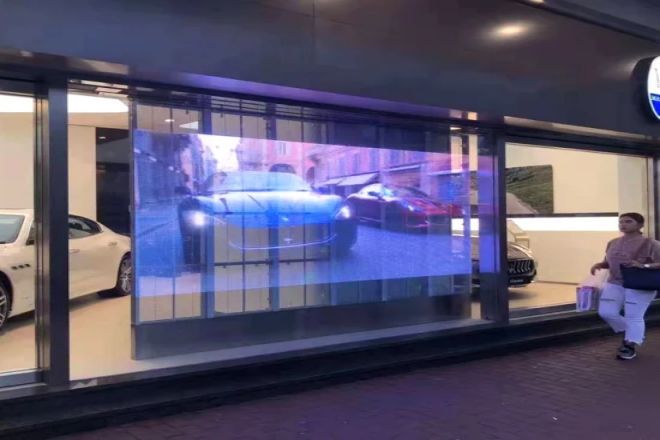
1). Challenges faced
Technical difficulty: While pursuing high transparency and high resolution, it is necessary to solve the problems of spacing, luminous efficiency, and heat dissipation between LED lamp beads. This requires continuous technological innovation and research and development.
Cost problem: High-definition, high-transparent LED display modules require the use of high-quality materials and advanced production technology, which may lead to an increase in cost and limit its application in some fields.
Diversification of market demand: With the continuous expansion of application fields, customers’ demand for transparent LED display modules has also shown a diversified trend. Meeting the needs of different customers is one of the challenges faced by module optimization.
2). Future development trends
Technology upgrade: With the progress and innovation of technology, the transparent LED display module will achieve greater breakthroughs in terms of display effect, energy efficiency, stability, and reliability. For example, more advanced packaging technology, drive circuits, and heat dissipation structures are adopted to improve the overall performance of the module.
Expansion of application fields: In the future, transparent LED display modules will be used in more fields, such as building curtain walls, commercial displays, smart homes, etc. This requires the module to have higher adaptability and flexibility to meet the needs of different fields.
Intelligent development: With the popularization of the Internet of Things, artificial intelligence, and other technologies, the transparent LED display module will achieve a higher level of intelligence. For example, through the integrated sensor and intelligent control system, the automatic adjustment of brightness, color, display content, and other functions can be realized to improve the user experience.
Sustainable development: In the future, module optimization will pay more attention to environmental protection and sustainable development. Green production and use can be achieved by adopting environmentally friendly materials and production processes to reduce energy consumption and waste emissions.
Conclusion
The above is the whole content of this article. If you want to know more about LED display screens, veuillez nous contacter !
